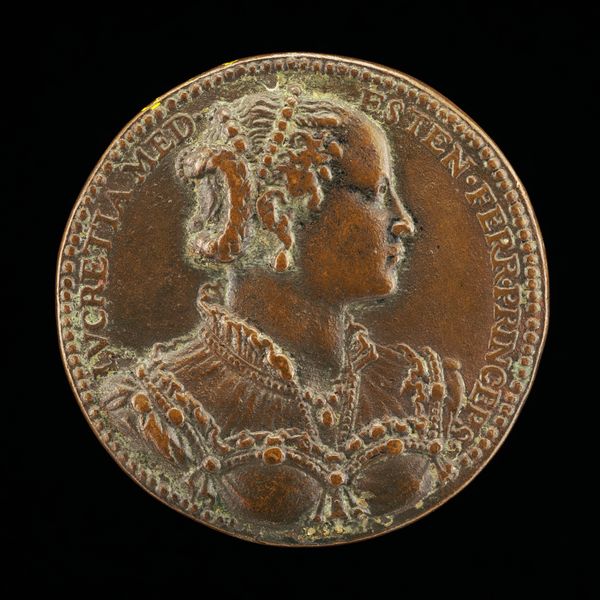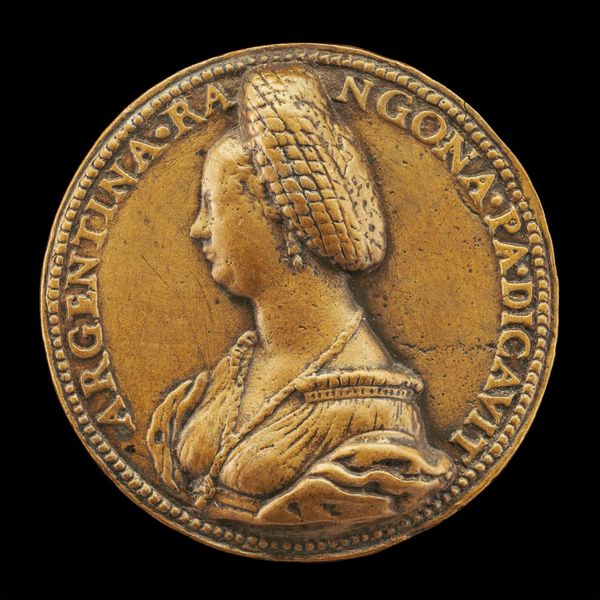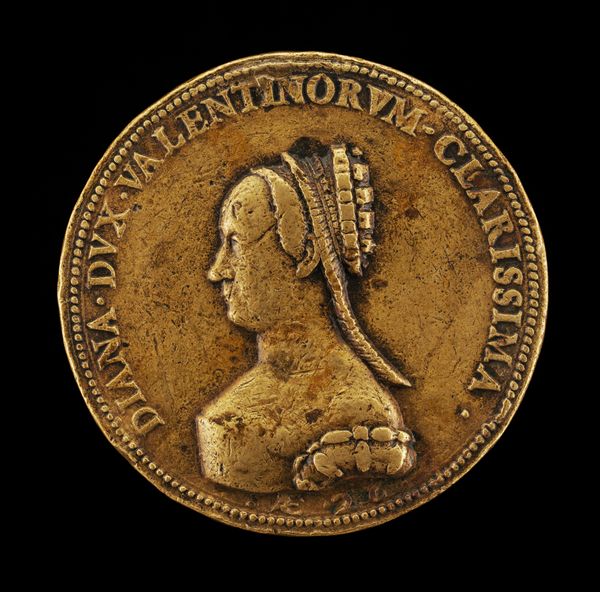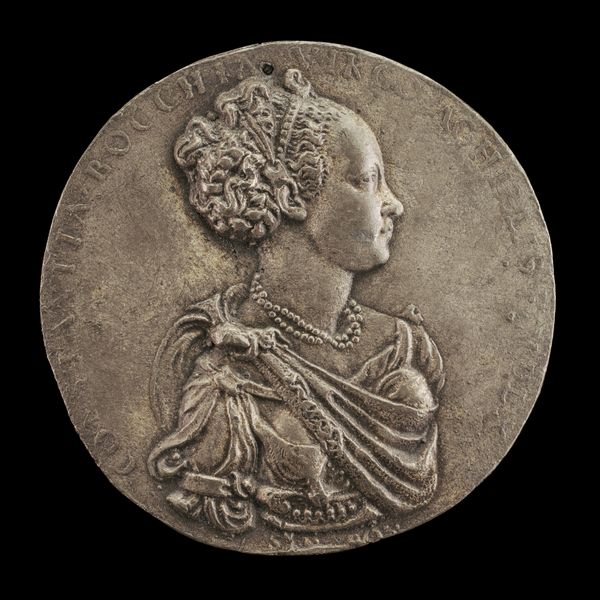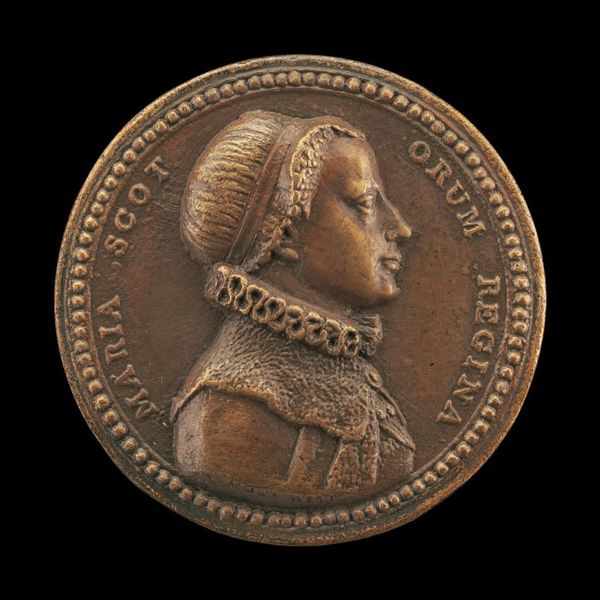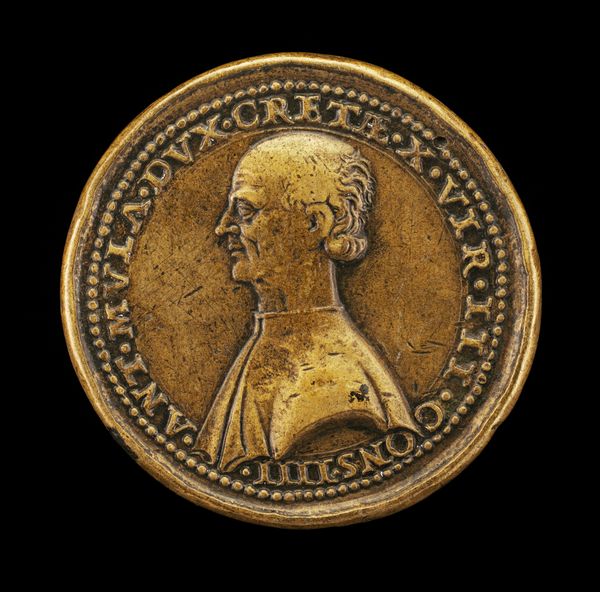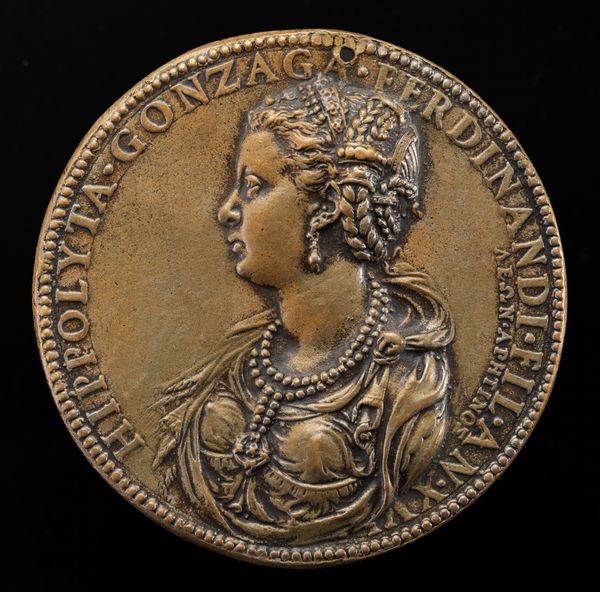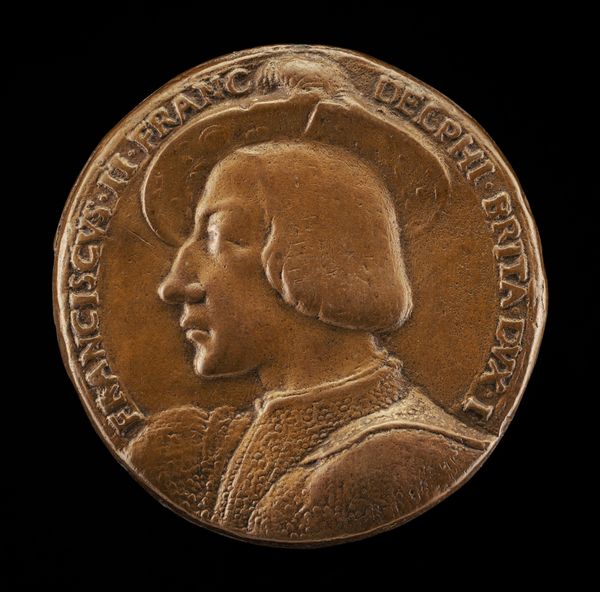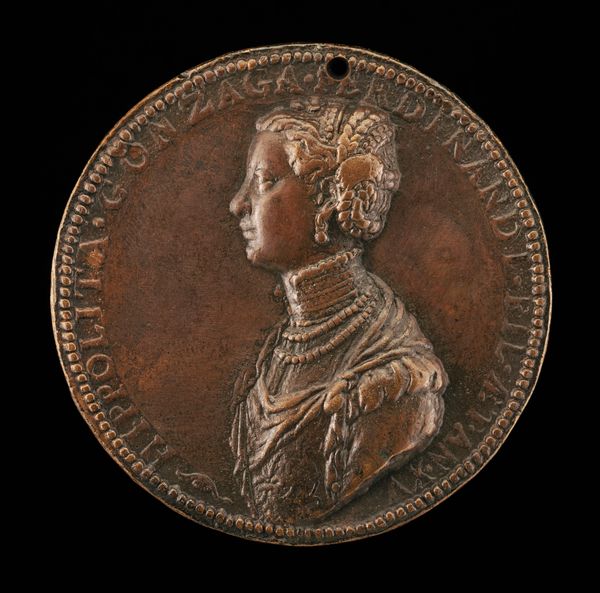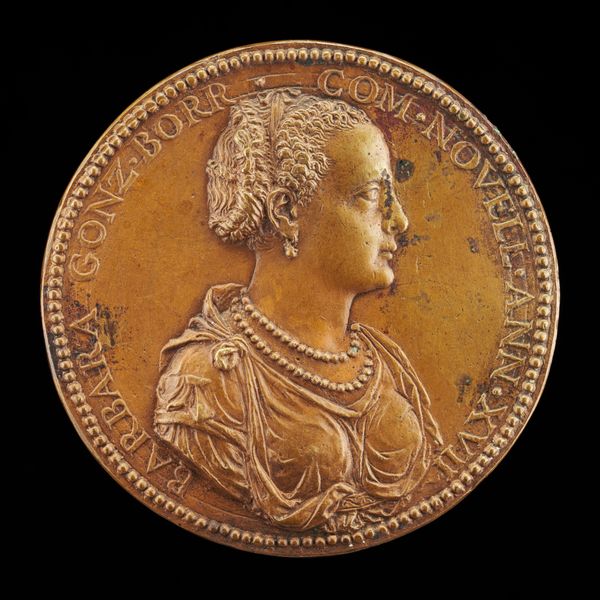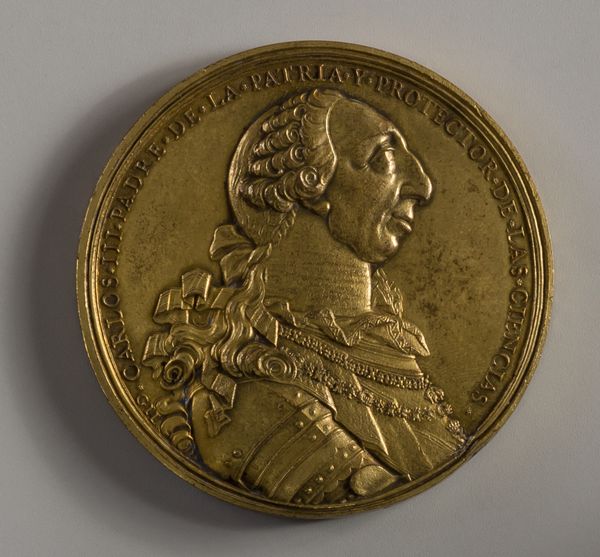![Chiara Tolentino Taverna, Wife of Francesco Taverna [obverse] by Pier Paolo Galeotti](/_next/image?url=https%3A%2F%2Fd2w8kbdekdi1gv.cloudfront.net%2FeyJidWNrZXQiOiAiYXJ0ZXJhLWltYWdlcy1idWNrZXQiLCAia2V5IjogImFydHdvcmtzLzk1YzdlNTBhLTgzYjktNDUwOS04NGExLTY4ZTE3ZDNjMmM4OS85NWM3ZTUwYS04M2I5LTQ1MDktODRhMS02OGUxN2QzYzJjODlfZnVsbC5qcGciLCAiZWRpdHMiOiB7InJlc2l6ZSI6IHsid2lkdGgiOiAxOTIwLCAiaGVpZ2h0IjogMTkyMCwgImZpdCI6ICJpbnNpZGUifX19&w=3840&q=75)
Chiara Tolentino Taverna, Wife of Francesco Taverna [obverse] c. 1554
0:00
0:00
bronze, sculpture
#
portrait
#
medal
#
sculpture
#
bronze
#
11_renaissance
#
sculpture
#
italian-renaissance
Dimensions: overall (diameter): 6.23 cm (2 7/16 in.) gross weight: 87.21 gr (0.192 lb.) axis: 12:00
Copyright: National Gallery of Art: CC0 1.0
Editor: Here we have a bronze portrait medal from around 1554, depicting Chiara Tolentino Taverna, wife of Francesco Taverna, by Pier Paolo Galeotti. It has such an austere quality. What can you tell me about it? Curator: It's fascinating to consider this medal as a window into the social construction of identity during the Renaissance. Medals like these were not merely portraits; they were deliberate acts of self-fashioning, especially for women. Chiara is presented as virtuous wife. What does her clothing communicate to you? Editor: I notice the high collar and the rather elaborate embroidery, hinting at wealth, certainly, and perhaps refinement. But she also appears distant, almost inaccessible. Curator: Exactly! Her gaze avoids direct engagement, reinforcing ideals of female modesty and obedience. This medal would have been a carefully controlled statement. Why would it be important to show only one side of the woman, and omit any others? Editor: Perhaps to highlight her status through her husband. Her identity seems defined almost entirely by her marital connection. Curator: Precisely. The inscription itself proclaims her role, a testament to the patriarchal structures that shaped women's lives. Consider how this contrasts with male portrait medals of the same period, which often celebrated individual achievements and ambitions. Editor: So the medal, while seemingly commemorating her, really reinforces her place within a system that limits her agency? Curator: Yes. It prompts us to consider how art functions to both represent and construct social norms. Whose stories get told, and how? Thinking critically about pieces like these is so vital for us today. Editor: That makes you see it in a totally different light; I was struck by her stern appearance, but didn't really read that within a social context of control. Curator: It shows how understanding the artwork is also about analyzing the culture that shaped its existence.
Comments
No comments
Be the first to comment and join the conversation on the ultimate creative platform.
